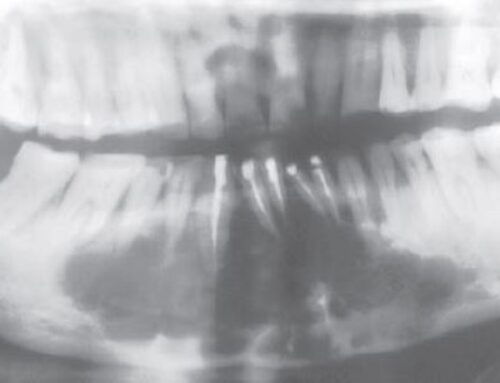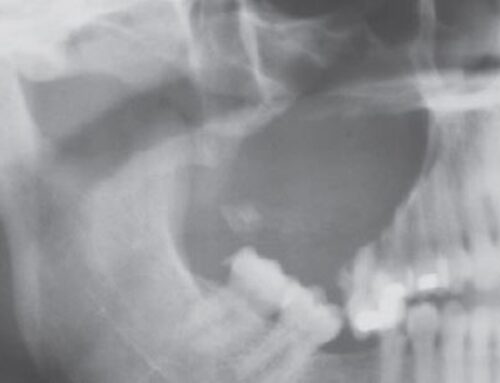The ameloblastic fibroma may behave either as a true neoplasm or as a hemartomatous proliferation of odontogenic epithelium of the enamel organ and odontogenic mesenchyme of the primitive dental pulp.
Incidence
- Mean age range is 6 to 12 years, and only a few cases seen after the age of 25 years.
- No sex predilection
Clinical Features
- solid, soft tissue mass with a smooth outer surface
- The tumor presents as an asymptomatic expansion of the jaws.
Location
- 70% cases in posterior mandible
Radiographic Features
- Unilocular or multilocular radiolucent lesion with well-defined, corticated margins
- Associated with unerupted tooth in 75% of cases
- Because of the age of occurrence, the mass will frequently displace developing teeth. It may also resorb roots and displace the IAN.
Histopathology
- composed of a cell-rich mesenchymal tissue resembling the primitive dental papilla admixed with proliferating odontogenic epithelium
Differential Diagnosis
- A strictly radiolucent lesion in the jaws of a child in which a well-demarcated margin within bone is observed usually suggests a cyst. If it is associated with the crown of an impacted tooth, a dentigerous cyst is likely. If it is unassociated with the crown of an impacted tooth, an odontogenic keratocyst is likely. At this age, a central giant cell tumor is also a distinct consideration as is Langerhans cell histiocytosis. Less commonly presenting as a radiolucency in children and young adults are an odontogenic myxoma, a central hemangioma, a calcifying odontogenic cyst that has not formed sufficient calcified material so as to appear on a radiograph, and rarely, an ameloblastoma.
Treatment
- conservative initial excision or curretage; more aggressive surgical excision reserved for recurrent lesions
- Approximately 35% of the cases of the rare ameloblastic fibrosarcoma develop in the setting of a recurrent ameloblastic fibroma





